Autumn has arrived, but there's still room for a few Tuscan villages!
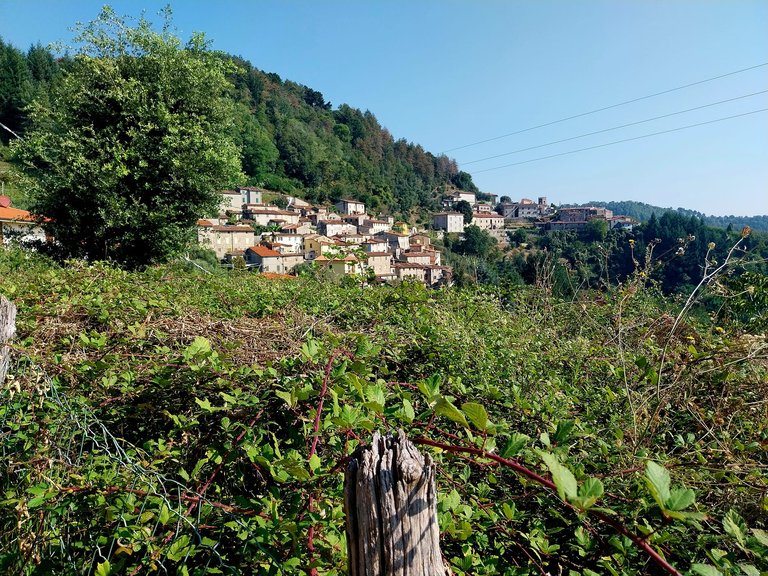
Hello dear friends,
We are now at the doorstep of autumn in Italy, but fortunately, the beautiful weather we've been experiencing still allows me to take you on explorations of interesting Tuscan villages. For example, with these photos today, I want to take you on an exploration of Gombitelli, a hamlet of the municipality of Camaiore, also in the province of Lucca. I don't know if you've had a chance to look at the previous post, but the village of Camaiore is certainly worth a visit as well.
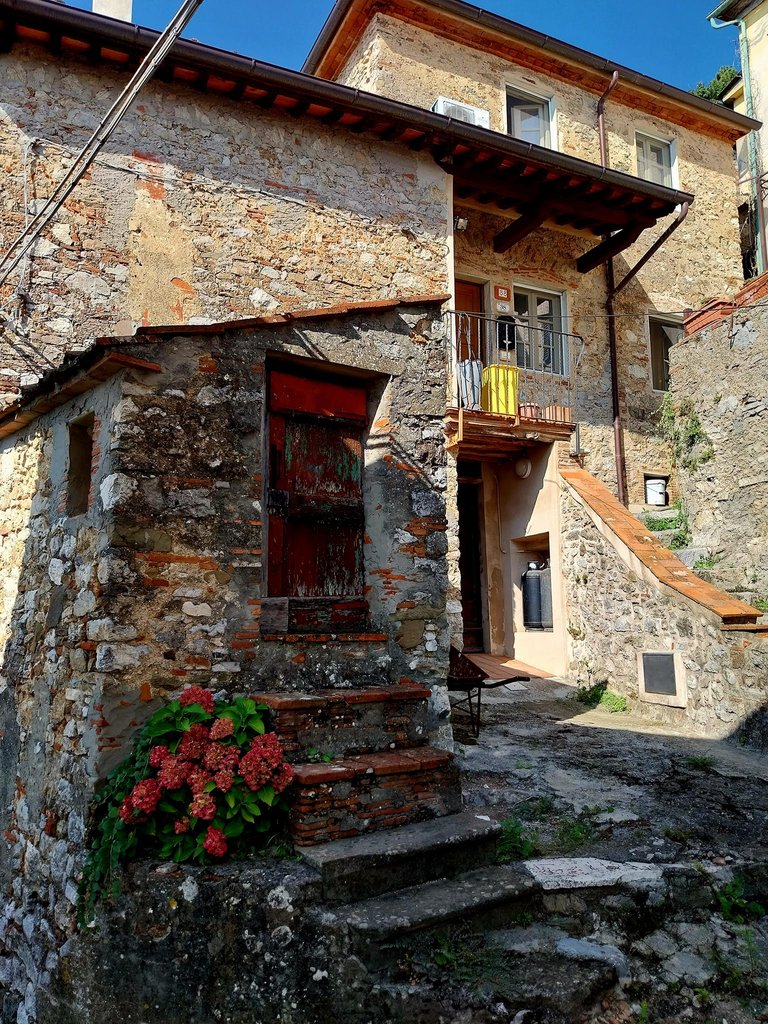
As you can always notice, the houses are always in a very particular position, fitting together.
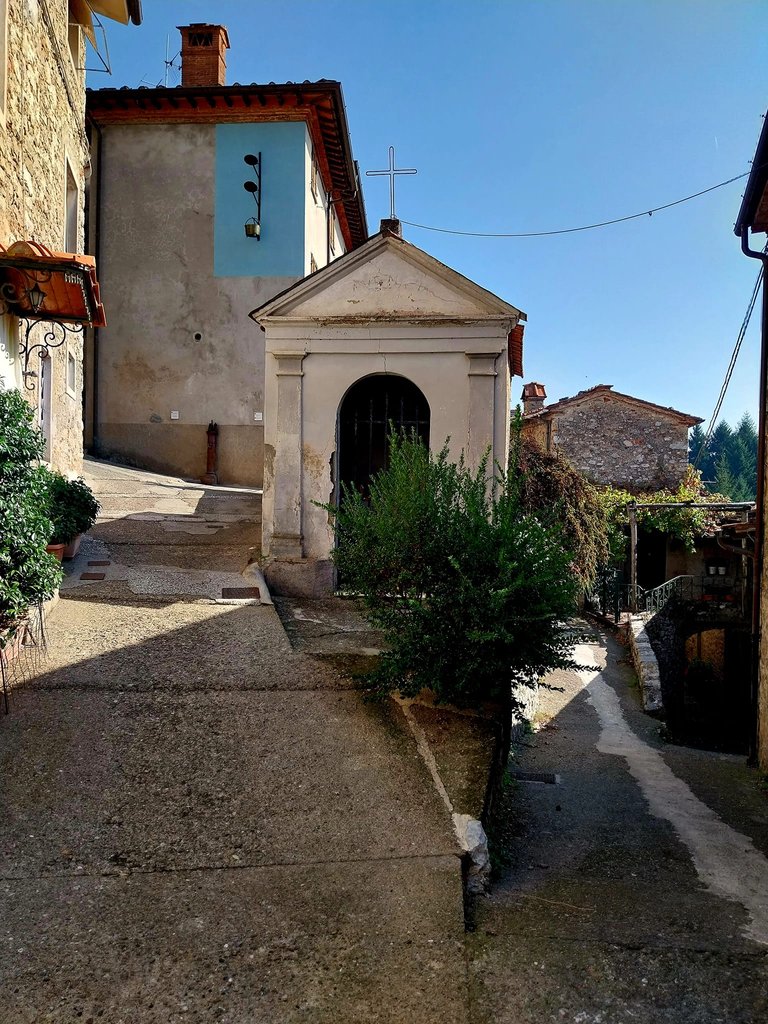
Within these villages, places of worship are always present, which indicates the enduring attachment to religion that once existed in these areas.
Gombitelli is famous mainly because once upon a time, meat was processed here, and a famous Tuscan salami, very flavorful and aromatic, was invented. Of course, the tradition of meat processing was widespread throughout Tuscany, not only here. However, the history of Gombitelli dates back to around the year 1000, and it's almost unbelievable how many years this village has witnessed. It's quite strange to walk along these ancient cobblestone streets and think about the centuries of history that have passed through this ancient place.
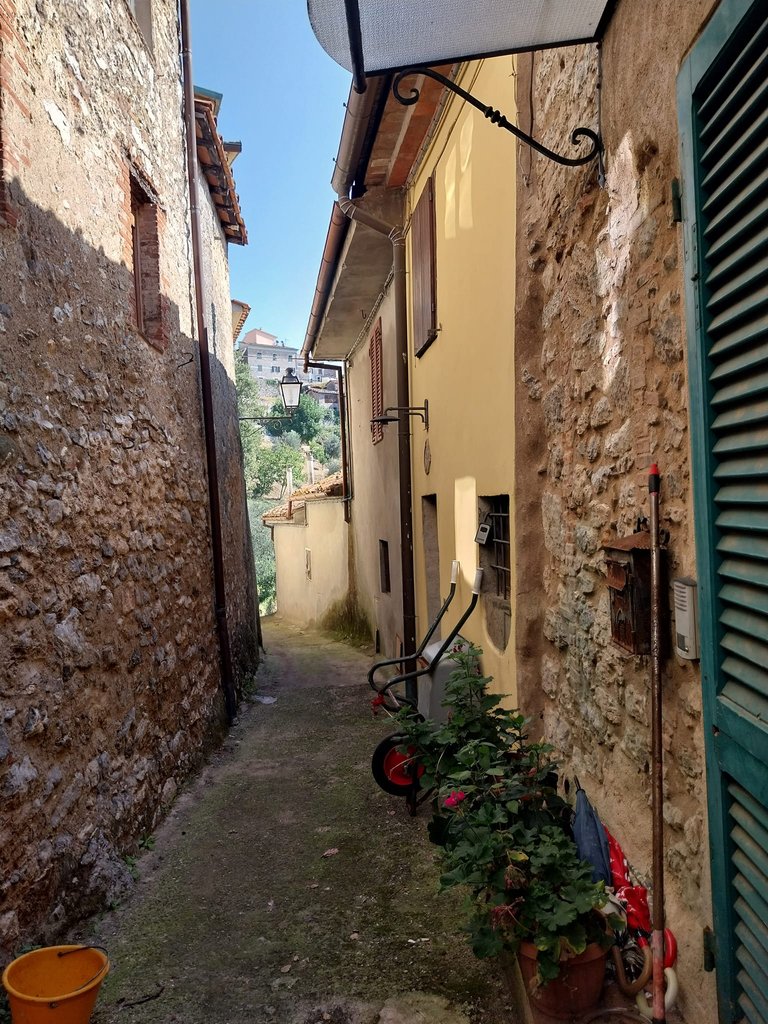
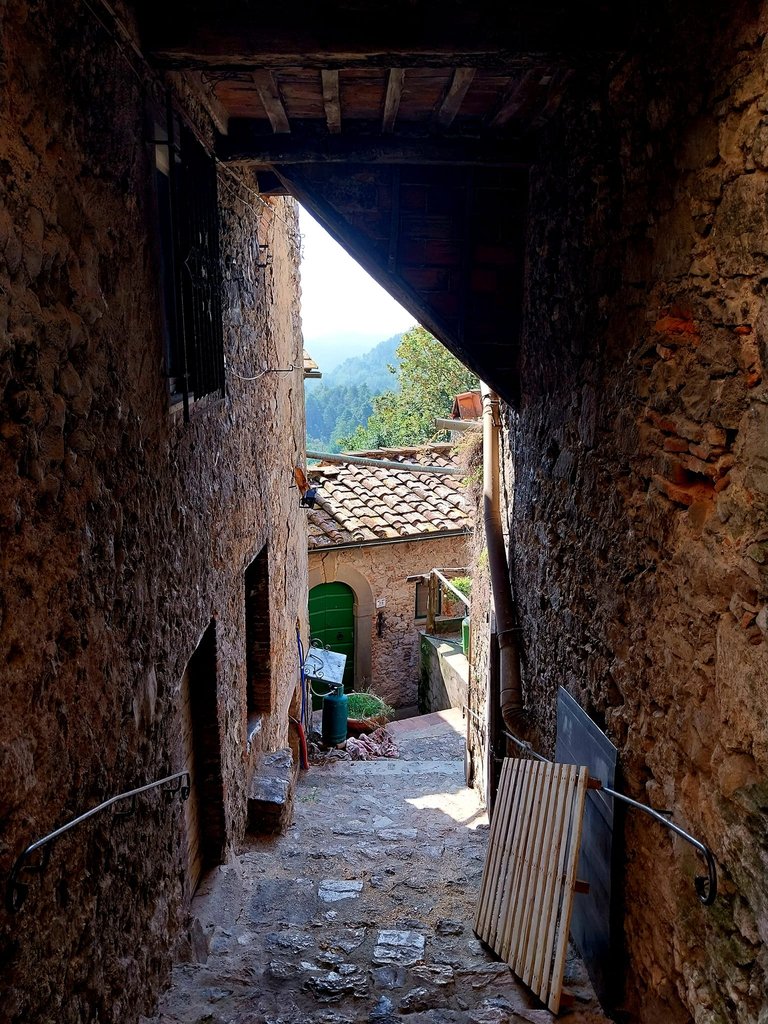
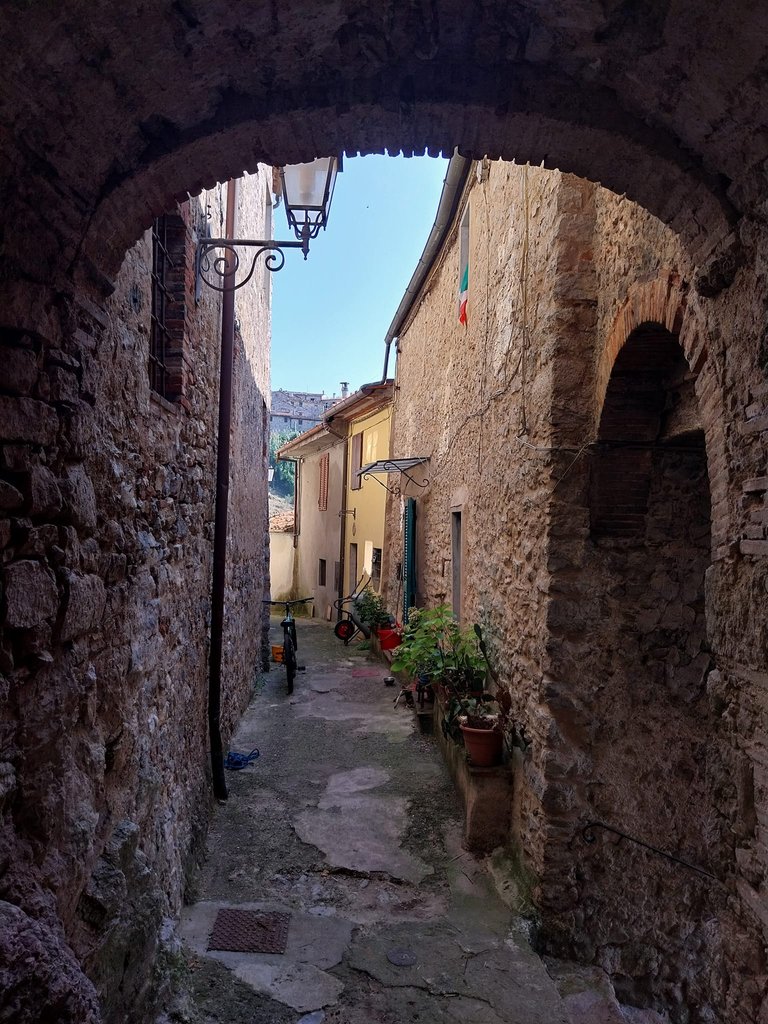
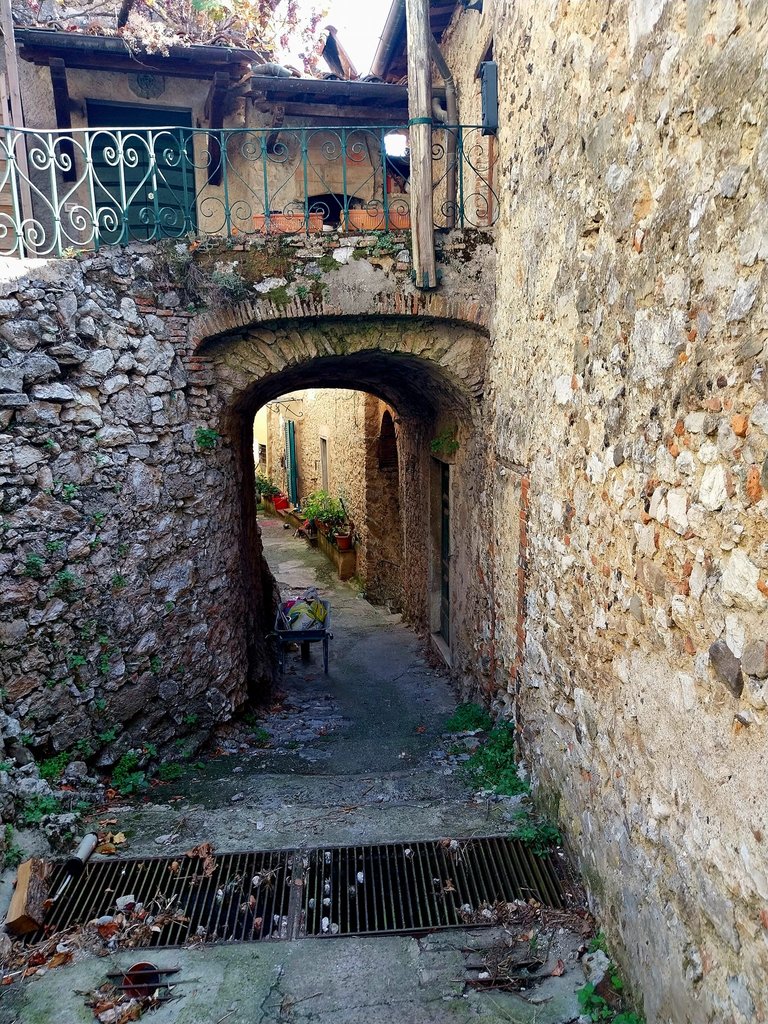
This village, which was built around a castle, although unfortunately, very little of the castle remains, probably due to World War II, was once located at an altitude of about 400 meters above sea level. In history, it was very important because around the year 1500, some blacksmiths loyal to Emperor Charles V moved here and founded small workshops for ironworking and nail production, which were crucial at the time.
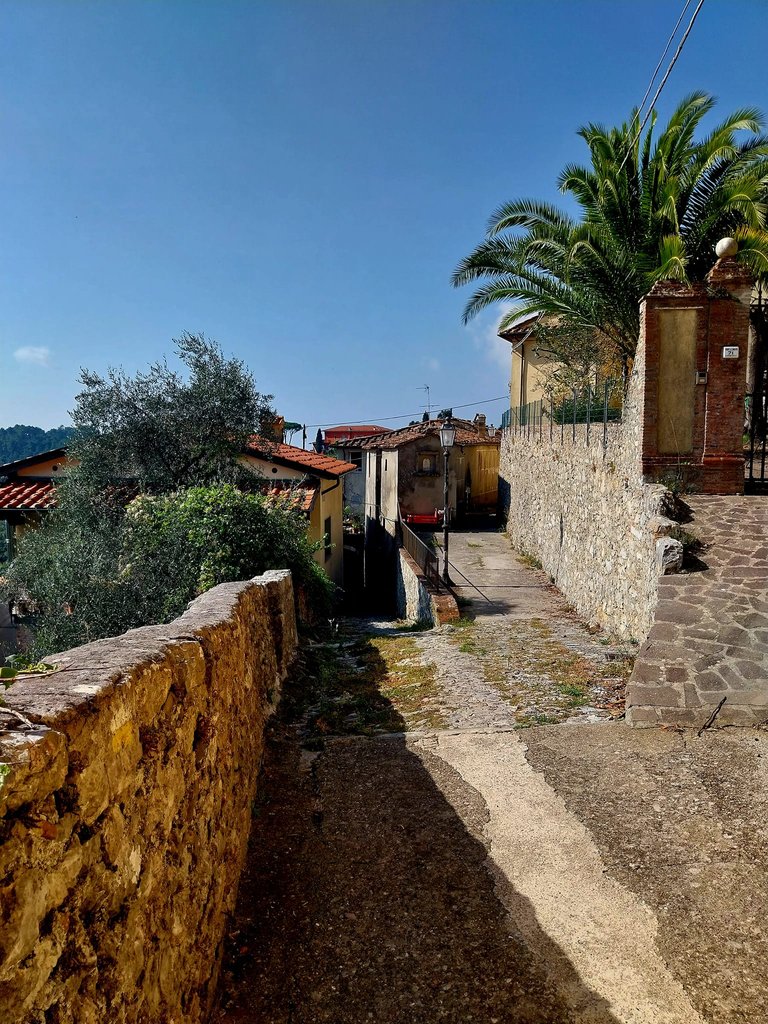
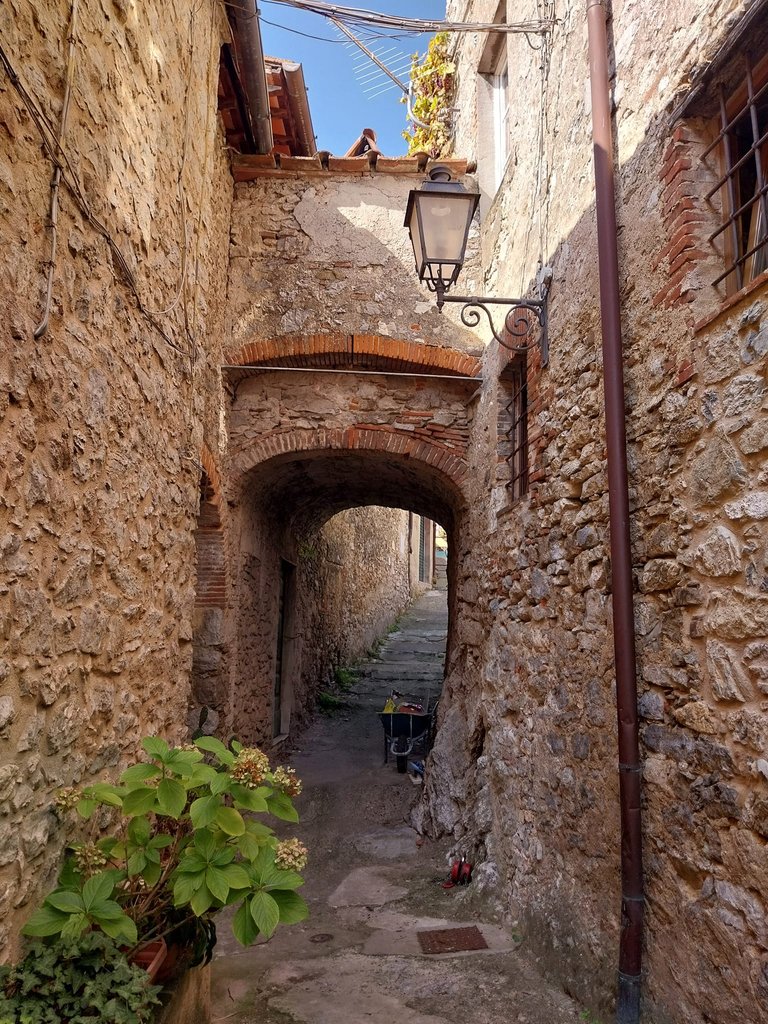
Can you believe that these structures are over 1000 years old? It seems incredible that they are still standing!
Thanks to these activities and artisan workshops, the village developed, although unfortunately today, parts of it are uninhabited, or as you've seen in other villages, most of the houses are holiday homes or second homes. However, if you notice in some photos, you can see that the houses are a bit scorched by fire, probably because ironworking was practiced near the houses, there were many workshops, and sometimes the walls of the houses would get scorched, but they didn't catch fire because they were made of stone.
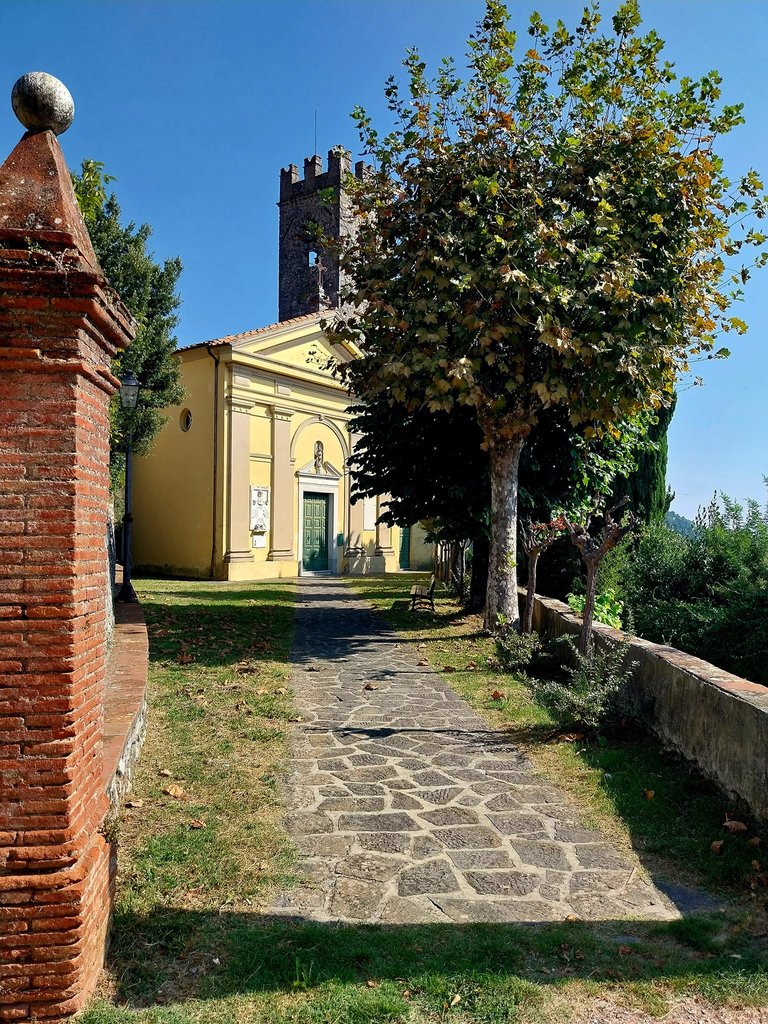


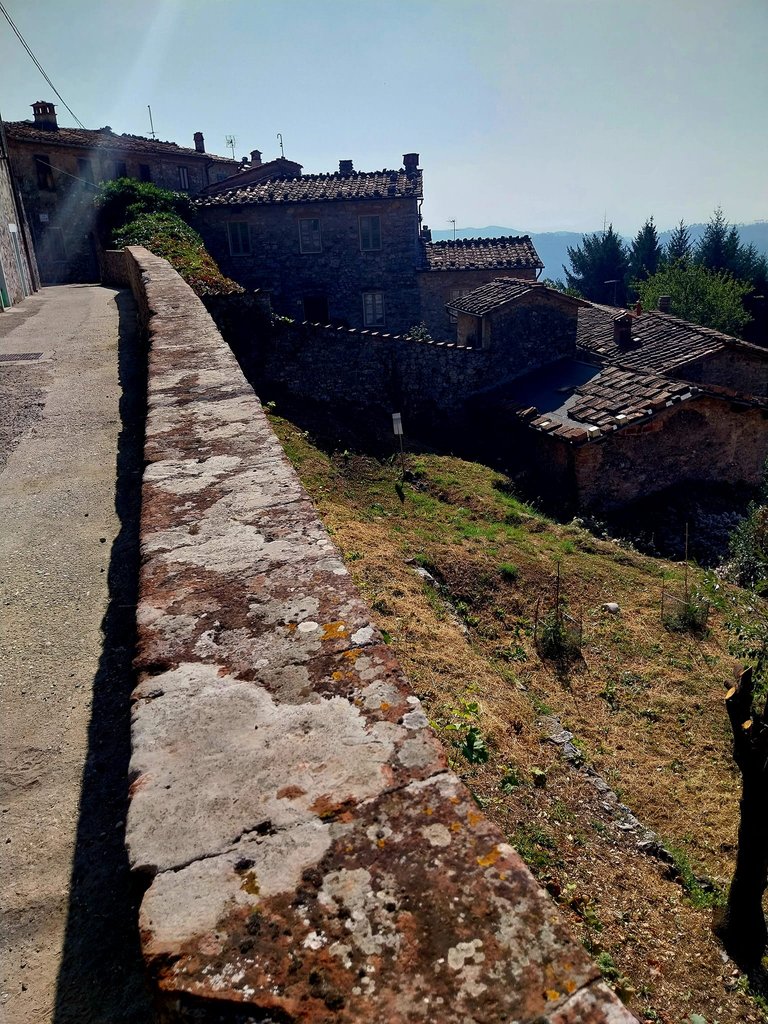
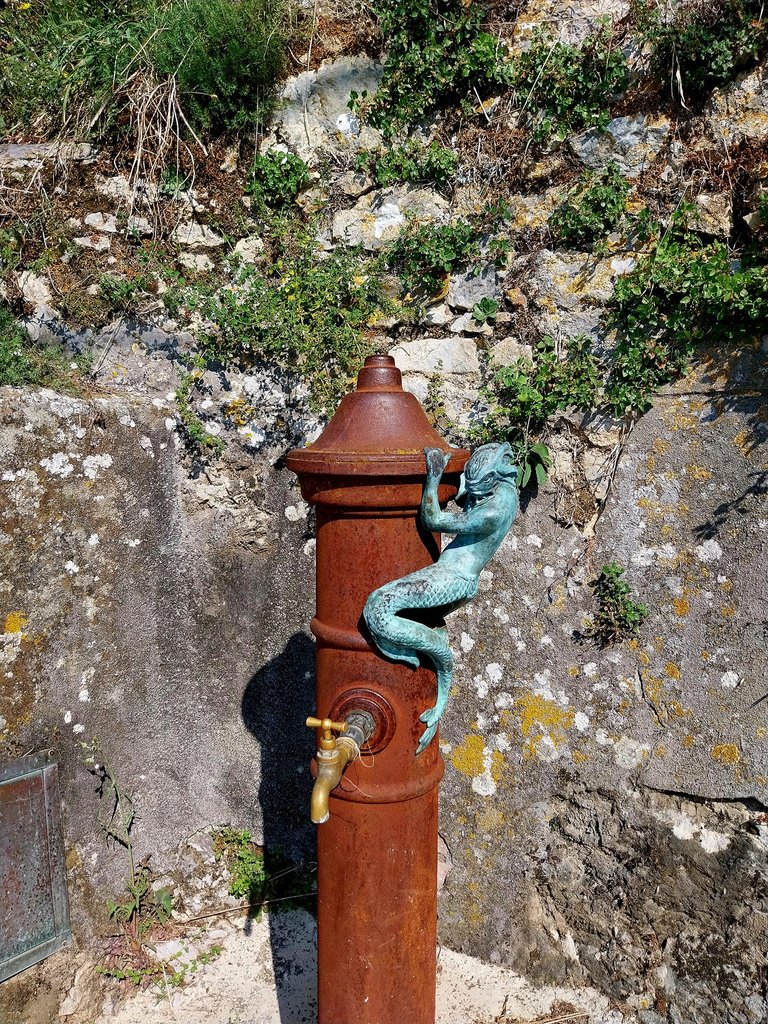
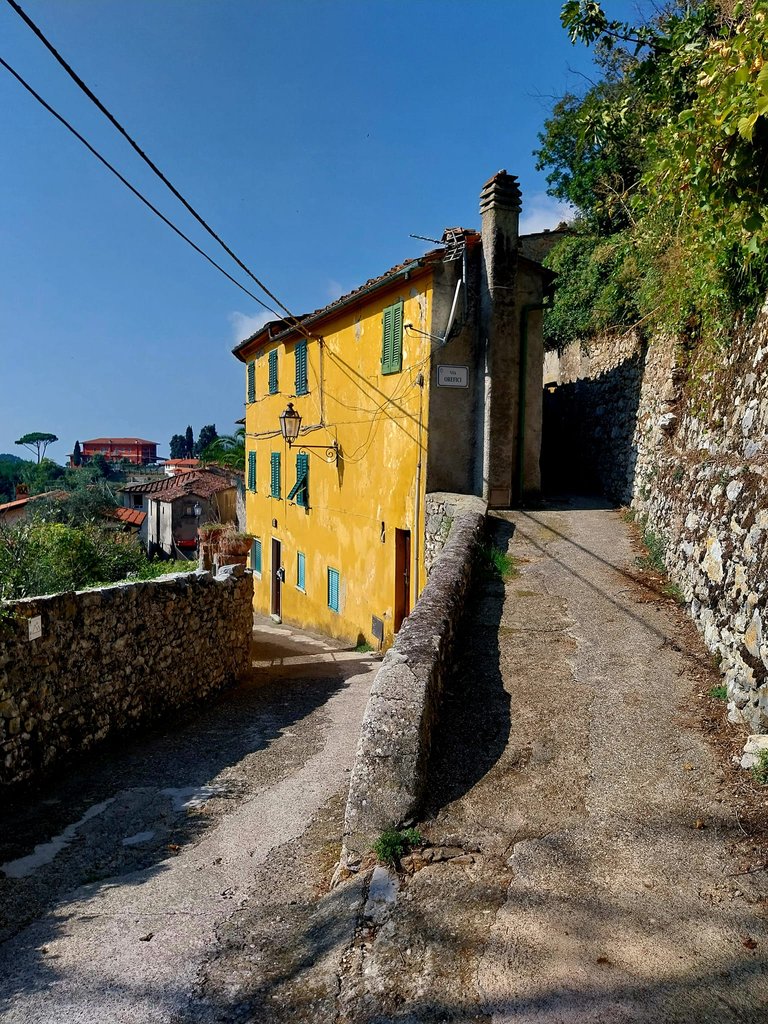
It was interesting and quite enjoyable to stroll through the streets of this village. I only regret not finding practically anyone to exchange a few words with. Nevertheless, these streets fascinated me a lot, even though they were sometimes quite challenging due to the steep inclines.
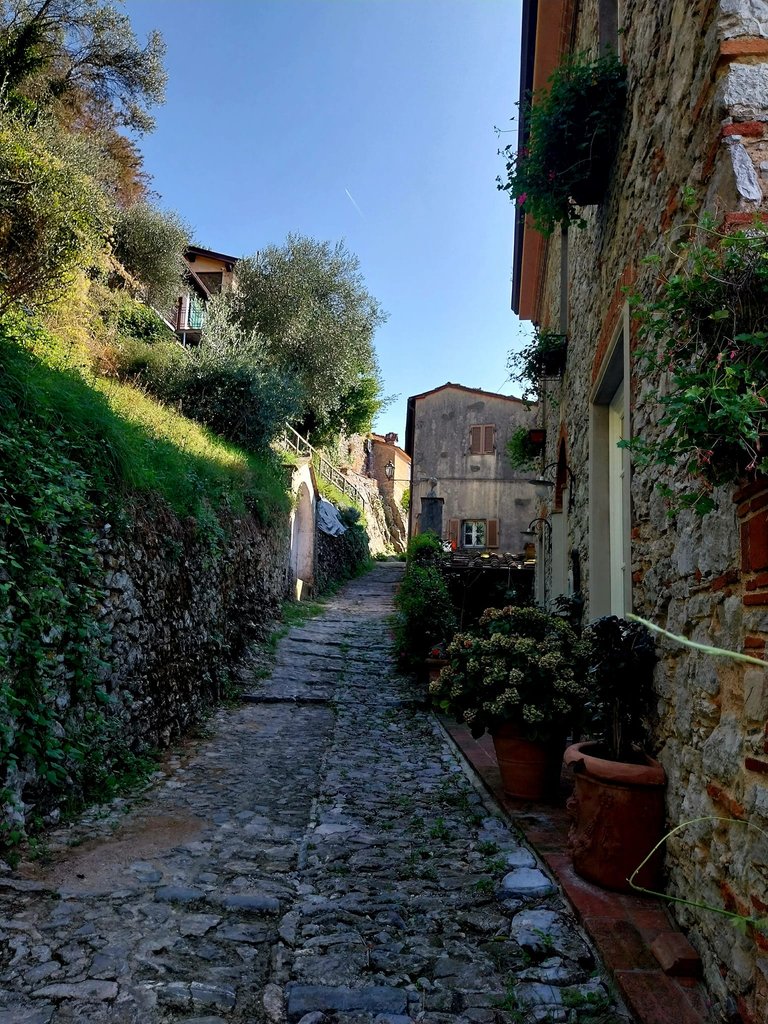
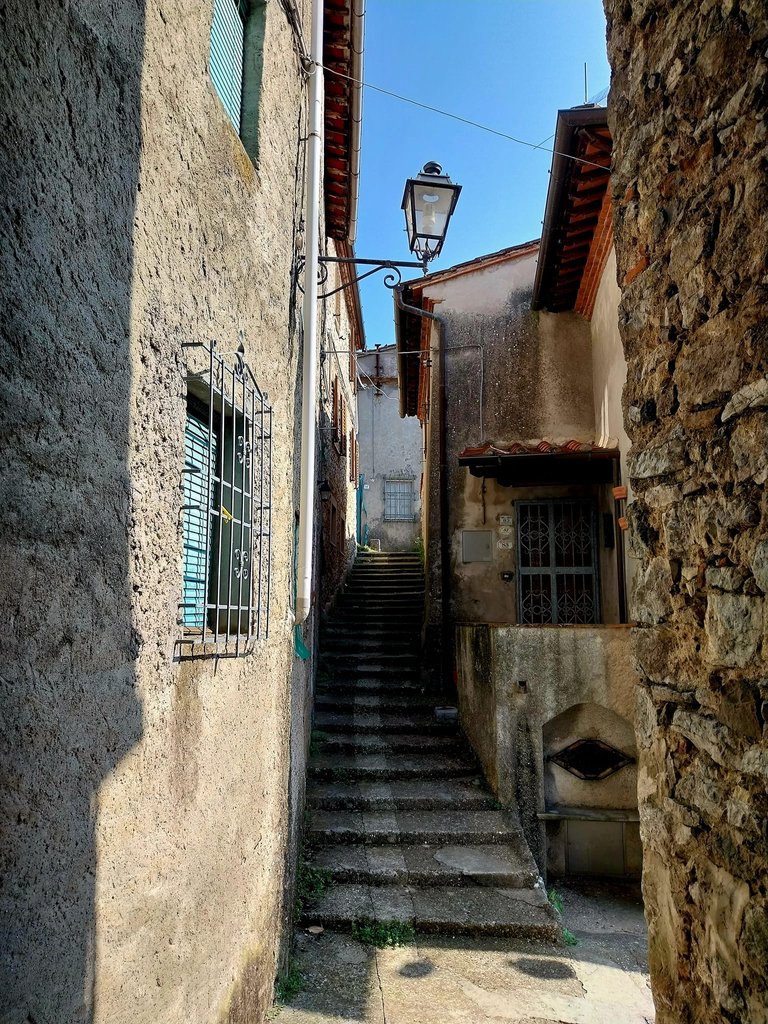
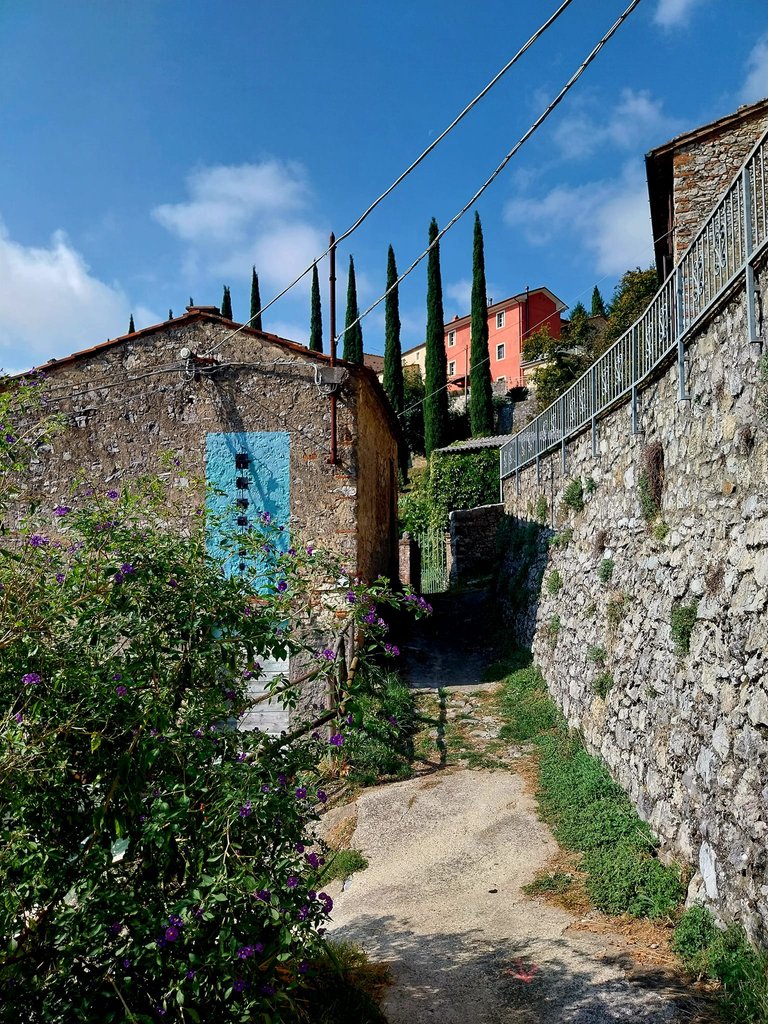

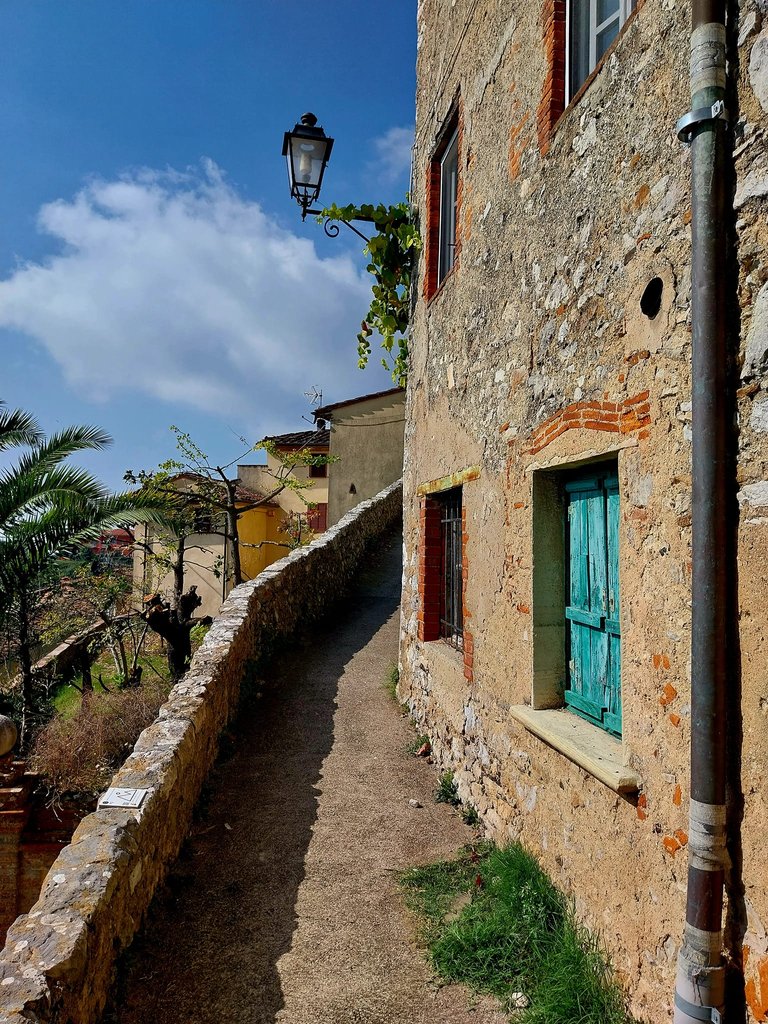
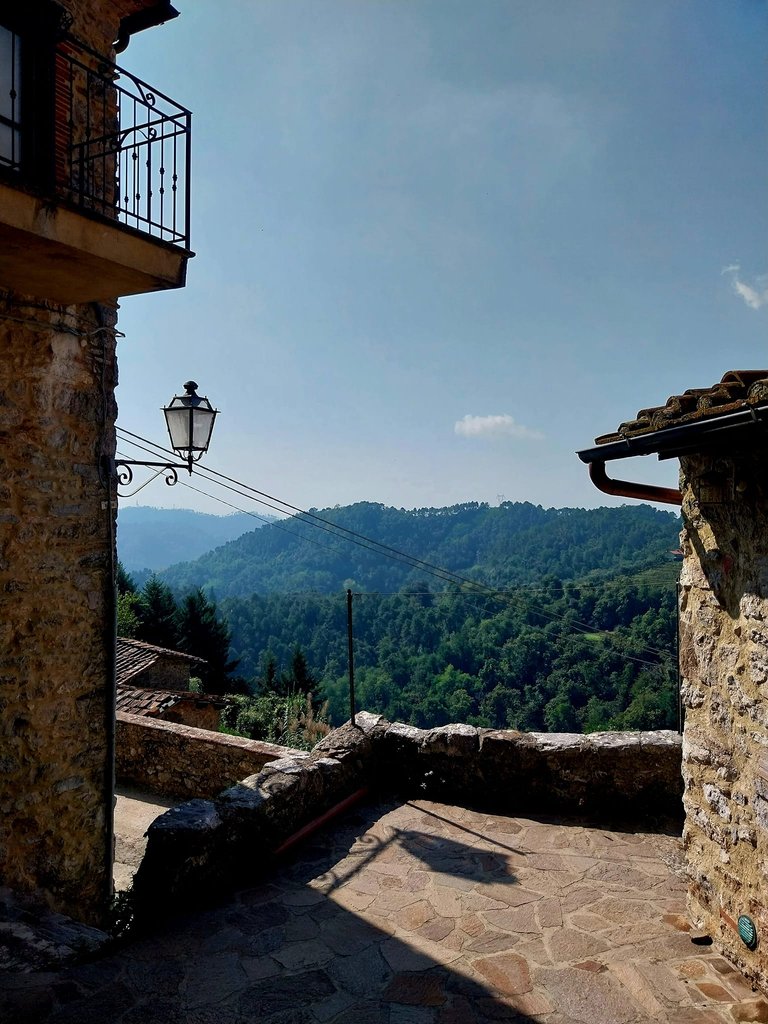
I hope it was interesting to have me introduce you to this place, which is certainly off the beaten tourist path. I've shared all the photos we took that day to virtually take you to this place, even though it's really difficult to convey the feelings I experienced while walking in those places.
See you soon, friends, in my next post, and I wish you all a good day filled with life and serenity!
The ancient buildings are durable; they have truly lasted for many generations.
Preserving and studying these ancient buildings is essential for understanding our shared heritage and the evolution of architectural practices.
Thank you for sharing about the castle. very nice view of Italy during autumn.
Thank you for your comment.
You're welcome!
Wow, very beautiful place. It seems interesting to spend a day getting to know this beautiful place 😊
Traveling and exploring new places can be a wonderful way to experience different cultures and environments.
Thank you for bringing me to Italy through this blog.🥰
Thank you for the very kind comment.
Hiya, @lizanomadsoul here, just swinging by to let you know that this post made it into our Honorable Mentions in Travel Digest #2023.
Your post has been manually curated by the @pinmapple team. If you like what we're doing, please drop by to check out all the rest of today's great posts and consider supporting other authors like yourself and us so we can keep the project going!
Become part of our travel community:
That's great to hear!
Congratulations, your post has been added to Pinmapple! 🎉🥳🍍
Did you know you have your own profile map?
And every post has their own map too!
Want to have your post on the map too?